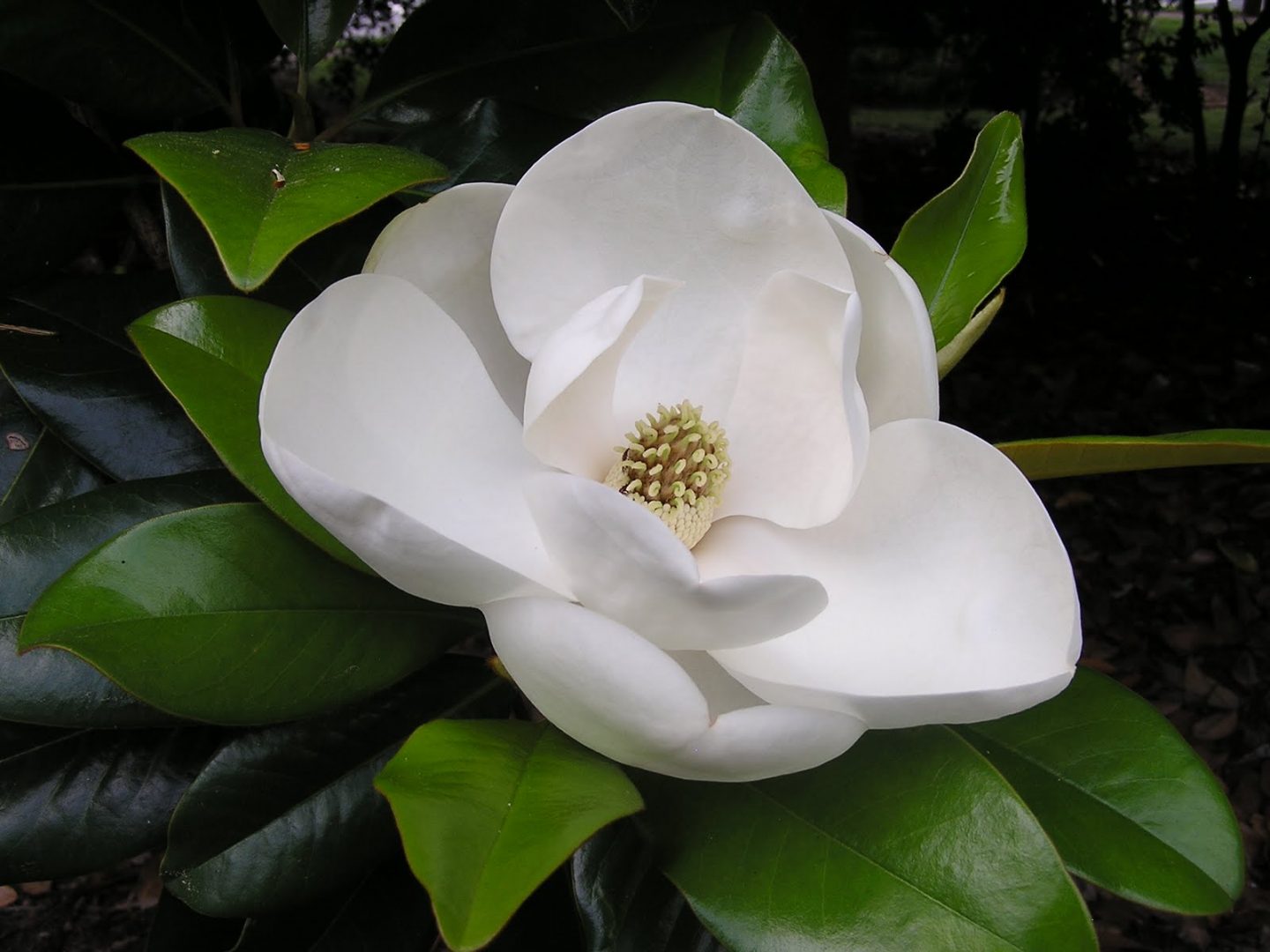| |
Magnolia (Magnolia Grandiflora)

|
Magnolia is the basic name and family name for an extensive gathering of deciduous or evergreen trees and bushes in the blooming plant family Magnoliaceae, described by fragrant twigs and frequently expansive and flashy blossoms. The term is additionally utilized for the bloom of any of these plants. Magnolia species are local toward the Western Hemisphere (the West Indies, some in South America and to east and southeast Asia, eastern North America, and Central America. Today, numerous types of Magnolia and a steadily expanding number of half and halves can likewise be found as decorative trees in substantial parts of New Zealand, Australia, North America and Europe . The Magnolia family is a piece of the Magnoliaceae family, in the blossoming plant request Magnoliales. Not at all like most angiosperms (blooming plants), whose bloom parts are in rings, the Magnoliaceae have their stamens and pistils in spirals on a funnel shaped repository. This course of action is found in old fossil plants and is accepted to be primitive for angiosperms.
Magnolia was named by the Swedish botanist Carl Linneaus in 1737 to pay tribute to the French botanist Pierre Magnol (1638-1715). The plant which Magnol had portrayed is that we now know as Magnolia virginiana an evergreen American species which in spite of its name was at that point developing in Europe by the mid eighteenth century. The most punctual western record of magnolias in development is found in Aztec history at the season of Montezuma where there are outlines of what we now know not the extremely uncommon Magnolia dealbata. This plant survives just in a couple puts in the wild and, in spite of the fact that environmental change is to a great extent at fault, the locals cut the blossoms for celebrations and this keeps the plants seeding. It was found by a Spanish traveler called Hernandez who was appointed by Philip II of Spain and whose work was distributed in 1651.
Numerous types of Mangolia are utilized as a part of option drugs. The bark from M. officinalis has long been utilized as a part of conventional Chinese pharmaceutical since in any event the first century AD. Magnolia bark, known as hou po in Chinese, is utilized to treat stomach torment, menstrual issues, sickness, the runs, heartburn, and stomach bloating, while infusions of magnolia bark concentrate are utilized as a muscle relaxant.
The flowers of the Michelia Grandiflora are what produce Magnolia essential oil.
Magnolia trees have existed for so long that they were apparently around before bees appeared and as the trees evolved, they developed flowers which promoted pollination. Depending on the accuracy of carbon dating, magnolia fossils have been discovered which were believed to be 20-million years old. The flowers and oil from magnolias have had a long history of use for ceremonial purposes in numerous cultures around the world. Ancient healers thought magnolia was useful in enhancing meditation and psychic awareness which made it even more valuable although it has always been considered a rare commodity, even in modern times.
There are a number of health benefits from using magnolia essential oil and it is probably best known as a remedy for a variety of skin conditions. It has been effective in the treatment of scars caused by acne and wounds. It has also been useful in the repair of damaged skin cells and pigmentation resulting from sun burn. Magnolia is also known to be helpful in relieving respiratory tract conditions including colds and coughs as well as an effective remedy for joint pain caused by gout and rheumatism.
Magnolia essential oil can be used in many ways including in aromatherapy and externally. The scent of the oil is quite strong but once diluted with a carrier oil it can be diffused to fill a room with its pleasant and uplifting aroma. When the vapours are inhaled, Magnolia essential oil can assist in relieving symptoms associated with a cold. Aromatherapy benefits of Magnolia include aiding the creation and maintenance of a faithful, loving relationship along with fertility, prosperity, purity and focused concentration. Magnolia oil can also be added to creams and lotions or can be applied directly as a massage oil. When used as a massage, Magnolia essential oil brings relief to joint pain and related conditions. Magnolia oil has also been effective when used as a natural tonic for skin and hair and has been an important ingredient in perfumes where it has been described as a soothing and calming fragrance. Magnolia oil should not be ingested.
Magnolia oil promotes peace and harmony. Magnolia is use for anxiety treatment due to a component Honokiol, which has certain anxiolytic qualities that directly impact the hormonal balance in the body, particularly in terms of stress hormones. By regulating the endocrine system, magnolia is able to reduce anxiety and stress by soothing the mind and lowering hormone release in the body. A similar chemical pathway allows magnolia to help relieve depression as well, by stimulating the release of dopamine and “pleasure” hormones that will turn your mood around in no time!
Magnolia has long been used to relieve certain respiratory conditions, including bronchitis, coughing, excess phlegm, and even asthma. Asthma is a particularly challenging respiratory condition to treat, and typically requires the use of a steroid inhaler. However, magnolia naturally stimulates the corticosteroids in the body to respond to conditions like asthma, thereby relieving that inflammation and preventing asthmatic attacks.
In a similar vein to magnolia’s effects against asthma, the steroid-mimicking properties of magnolia extracts help to prevent allergic reactions in those who regularly suffer from these symptoms. If you have hay fever, seasonal allergies, or specific allergen sensitivity, magnolia supplements can help to strengthen your resistance and keep you feeling your best!
Our Magnolia blossoms are harvested at night, when their fragrance is most potent. Besides being used to treat various health issues, the Magnolia flower is used in Japanese culture for cooking and food.
Use Magnolia Flower Oil to make a petal perfume or hair oil, ignite the heart, inspire the body, and get in touch with the
Magnolia essential oil should not be used by pregnant women and breast-feeding mothers.
Magnolia essential oil blends well with rise, sandalwood, geranium, clary sage, lime, rose, jasmine, neroli and other spicy, floral and citrus oil.
Disclaimer: The information presented herein is intended for educational purposes only. These statements have not been evaluated by the FDA and are not intended to diagnose, cure, treat or prevent disease. Individual results may vary, and before using any supplements, it is always advisable to consult with your own health care provider.
|
|


















